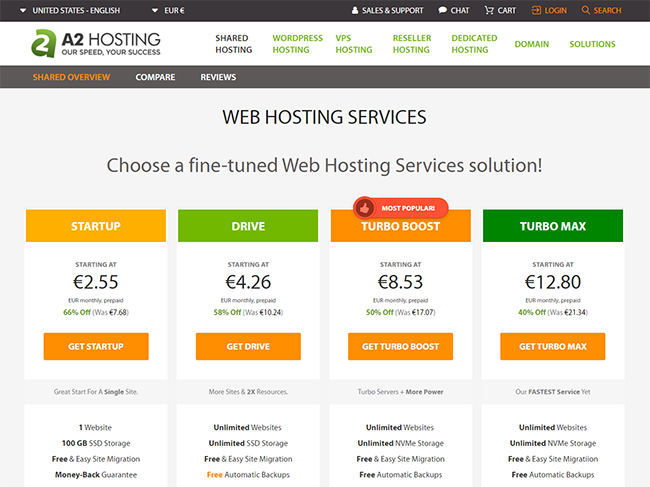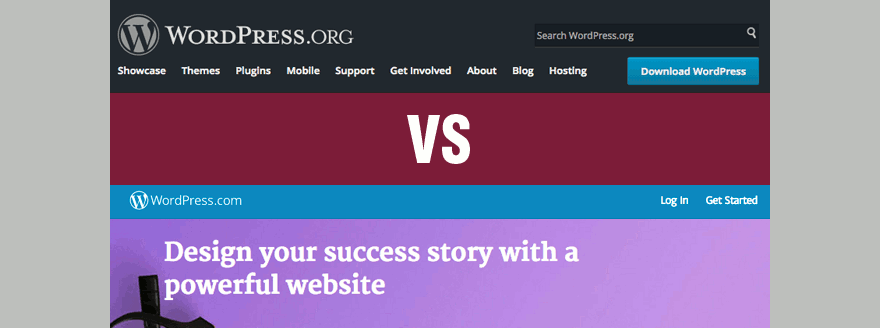Web hosting plays a vital role in your WordPress site’s performance. In this post, I will go over a number of tips to help you choose quality shared WordPress web hosting for your website, including reputation, support, hardware they use, number of sites supported and more.
If you select a crappy web host (e.g. BlueHost, Hostgator, and all other hosts owned by EIG), it will cause you nothing but headaches. A website which loads slowly leaves a terrible first impression on your visitors, and in most cases will cause them to leave in a hurry, praying that the next site they visit loads more quickly.
Choose quality shared web hosting, and get your new website started the right way. Don’t just go with the cheapest possible hosting package you can find. You get what you pay for, and you’ll get a website that loads slowly and makes you look unprofessional. Save yourself the headache, and pay a few bucks more for quality.
If you’re looking for quality shared hosting for your WordPress website, we highly recommend A2 Hosting. They offer unlimited SSD space, free automatic site backups, hosting optimized for speed and 24/7/365 guru technical support.
What is Shared Web Hosting?
Shared web hosting means that your website is sharing a large web server with many other websites. Having numerous sites on one server lets providers offer this service at very affordable rates. You can easily find quality shared hosting packages for a few dollars per month.

I have never used A2 Hosting, but have heard good things about them. If you’re looking for shared hosting, you can give them a try.
Update: We used to use and recommend SiteGround, but they suck now so STAY AWAY! Their support has gone downhill (sometimes they totally disable online chat), prices keep going up and their move from cPanel to Site Tools was a disaster. After the switch, I was getting constant 500 Internal Server errors so I moved all my sites to Cloudways cloud hosting.
When you are just starting out, a shared hosting plan is sufficient for your needs. You can upgrade your hosting later as your site grows in popularity and starts receiving a ton of traffic.
For the majority of sites online, shared hosting is all they’ll ever need.
Things to Consider
When choosing a shared hosting provider, there are some important things to take into consideration. Providers and plans are NOT created equally, and it’s better to choose a good host from the get-go so you don’t have to migrate your site later.
Web Host Reputation
Before you select a shared web hosting provider for your website, make sure and do your homework. Check out multiple reviews online and come up with a short list (maybe 3) of potential hosting companies.
Please note: There are some biased reviews online in which people review and recommend certain hosts because they earn money from affiliate links to them. Not all of these reviews are wrong, but keep in mind that they can be inaccurate.
If you see anyone recommending BlueHost, please know that they are not to be trusted and are doing you a great disservice. While BlueHost used to provide great service, they’re total garbage now. The same goes for all hosting companies owned by Endurance International Group (EIG).
Customer & Technical Support
Different web hosts have varying levels of customer service, ranging from beyond dreadful to absolutely stellar. When choosing a hosting provider, make sure that their customer and technical support is helpful and quick to respond.
You don’t want to sign up with a provider, only to find out later that it’s impossible to get help from them when you need it.
FREE Solid State Drives (SSDs)
Solid State Drives (or SSDs) offer much faster read and write speeds than traditional Hard Disk Drives (HDDs). This results in faster delivery of your website content, whether you run a blog, eCommerce website or custom-built application. Many hosts offer FREE SSDs as part of their shared hosting plans. Others may charge for them.
Number of Websites Supported
In many cases, you can have numerous websites on one hosting plan. With InMotion, you can have up to 2 sites on their Launch Plan, 6 websites on their Power Plan or unlimited sites on their Pro Plan. Make sure you read through all the plan details to choose the plan that will accommodate your specific needs.
Backups
Your site’s security should be of utmost importance, and you want to make sure you have your site backed up in case anything goes wrong. Some providers offer free regular backups as part of their shared hosting plans.
* If your host does not offer backups or charges extra for them, you can use a WordPress plugin instead and schedule automatic backups yourself.
Developer Access
Make sure that your plan gives you and/or your developer access to all the tools you need to easily build and manage your website.
These include the following:
- cPanel login from anywhere
- Access to hosting technical information
- FTP access and new account setup
- SSH access
- Softaculous application installer
- Ruby, PHP, MySQL, PostgreSQL
- Email creation & management
- Email forwarding
- Spam, account & user level filter setup
Conclusion
All shared web hosting providers are NOT created equally. Some companies should be avoided at all costs – GoDaddy’s shared hosting service comes to mind. I had a few sites hosted with them, and they were all slow as hell. Doing any kind of work on them – or waiting for them to load – was like pulling my own teeth without a mirror or anesthesia – slow, awkward and painful.
I ended up moving those sites to InMotion Hosting, which has provided excellent service. This particular site was hosted on 1and1, but I recently migrated it (and a bunch of other sites) to SiteGround.
Do you have any questions or comments about choosing the best shared web hosting for your WordPress website? Leave a comment below and let me know your thoughts.
If you found this post helpful, please share it and spread the word!
Want more like this? Sign up for my newsletter to receive helpful WordPress Tutorials, Tips and Tricks.




Comments are closed.